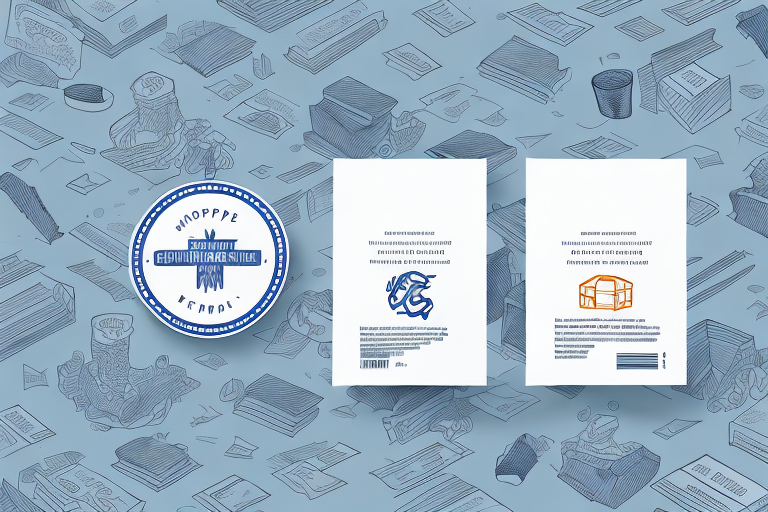Comparing Standard Shipping and Expedited Shipping: Which is Right for You?
When it comes to shipping your goods, choosing the right method can significantly impact the timeliness and safety of your package's arrival. With standard shipping and expedited shipping being the most popular options, deciding which one to use can be challenging. This article compares standard and expedited shipping, outlining the benefits and drawbacks of each to help you determine the best fit for your shipping needs.
The Importance of Choosing the Right Shipping Method
Selecting the appropriate shipping method is crucial, especially when dealing with time-sensitive or valuable items. The right choice ensures that your package arrives on time, intact, and without incurring unnecessary costs. Conversely, the wrong choice can lead to delays, damage, or increased expenses.
Key Considerations
- Distance: The distance between the sender and recipient affects delivery times and available shipping options. International shipments often require methods that handle customs processes, while domestic shipments to remote areas may need more robust logistical solutions.
- Cost: Balancing the cost of shipping against the urgency and value of the items being sent is essential. It's important to compare rates from different carriers to find the most cost-effective solution.
- Value and Sensitivity: High-value or fragile items may benefit from expedited shipping options that offer enhanced tracking and handling services.
According to the 2023 Shipping Statistics Report, over 60% of businesses prioritize timely delivery when choosing shipping methods, highlighting the significance of this decision.
Understanding Standard Shipping
Standard shipping is the traditional method where packages are transported via ground services. It is typically the most affordable option, with delivery times ranging from 3 to 7 business days domestically, and longer for international shipments. This method is ideal for non-urgent items such as clothing, books, or non-perishable goods.
While standard shipping is cost-effective, it may not always be the most reliable, especially during peak seasons like holidays when delays are more common.
Benefits of Standard Shipping
- Affordability: Lower shipping costs make it an attractive option for budget-conscious shippers.
- Environmental Impact: Ground transportation often results in lower carbon emissions compared to air transport.
Drawbacks of Standard Shipping
- Longer Delivery Times: Not suitable for time-sensitive deliveries.
- Potential for Delays: Increased risk of delays during high-demand periods.
Expedited Shipping: Pros and Cons
Expedited shipping offers faster delivery times, typically ranging from overnight to three business days. This method is ideal for urgent shipments, perishable items, or valuable goods that require swift and secure delivery.
Advantages of Expedited Shipping
- Speed: Significantly reduces delivery times, ensuring timely arrival.
- Enhanced Tracking: Provides detailed tracking information for better visibility.
- Reliability: Higher priority handling reduces the likelihood of delays.
Disadvantages of Expedited Shipping
- Higher Costs: More expensive than standard shipping options.
- Limited Availability: Not always available for all destinations, especially remote or international locations.
Key Factors in Choosing Between Standard and Expedited Shipping
When deciding between standard and expedited shipping, consider the following factors:
- Urgency: How quickly does the package need to arrive?
- Budget: What is the maximum amount you are willing to spend on shipping?
- Package Value: Are you shipping high-value or fragile items that require extra care?
- Destination: Is the delivery location easily accessible, or does it require special handling?
- Carrier Policies: Different carriers have varying policies and services, so it's important to review these before making a decision.
Cost vs. Speed: Making the Decision
Balancing cost and speed is often the most critical aspect of choosing a shipping method. For non-urgent items, standard shipping is usually sufficient and more cost-effective. However, for urgent or high-value items, the additional cost of expedited shipping can be justified by the benefits of faster and more reliable delivery.
Industry data from the FedEx Annual Shipping Report indicates that expedited shipping accounts for approximately 30% of all shipments, underlining its importance in the shipping ecosystem.
When to Choose Standard Shipping
Standard shipping is the optimal choice when:
- Your package is not time-sensitive.
- Your shipping budget is limited.
- Your destination is relatively close.
- You do not require extensive tracking.
However, if a specific delivery date is crucial or if tracking is necessary, you might need to consider expedited options.
When to Opt for Expedited Shipping
Expedited shipping should be considered when:
- You need your package to arrive quickly.
- Your package is perishable or time-sensitive.
- Your budget allows for higher shipping costs.
- Your destination is far, and prompt delivery is required.
- You require detailed tracking information.
Sending gifts for specific occasions or valuable items also warrants the use of expedited shipping to ensure timely and safe delivery.
How to Save Money on Shipping Costs
Shipping costs can add up, but there are several strategies to minimize expenses:
- Compare Carrier Rates: Different carriers offer varying rates and services. Comparing these can help you find the most cost-effective option.
- Use Flat-Rate Shipping: Flat-rate boxes and envelopes can be a great way to control shipping costs, especially for heavier items.
- Optimize Package Size and Weight: Reducing the size and weight of your package can lead to significant savings.
- Take Advantage of Discounts: Many carriers offer discounts for bulk shipping or through business accounts.
Utilizing a shipping calculator can also help determine the most cost-effective shipping method based on your package's specifics.
Tips for Tracking Your Shipment
Tracking your shipment provides peace of mind and allows you to monitor your package's progress. Here are some tips:
- Use the Provided Tracking Number: Every shipment comes with a unique tracking number. Enter this on the carrier’s website to get real-time updates.
- Enable Notifications: Many carriers offer email or SMS notifications to alert you of your package’s status changes.
- Consider Third-Party Tracking Apps: These can consolidate tracking information from multiple carriers in one place.
Comparing Shipping Carriers
Choosing the right carrier is as important as selecting the shipping method. Some of the top carriers include:
- FedEx - Known for reliable expedited services.
- UPS - Offers a wide range of shipping options and robust tracking.
- USPS - Ideal for cost-effective domestic and international shipping.
- DHL - Excellent for international shipments with extensive global coverage.
Regional carriers like OnTrac may offer competitive rates and faster delivery times within specific areas.
The Impact of COVID-19 on Shipping Services
The COVID-19 pandemic has had a lasting impact on shipping services worldwide. Increased e-commerce demand, supply chain disruptions, and workforce shortages have led to longer shipping times and higher costs. While many of these challenges have been mitigated since the peak of the pandemic, carriers continue to adapt to changing conditions.
According to a report by Statista, shipping delays have decreased by approximately 40% since 2021, but some fluctuations in delivery times persist due to ongoing global economic factors.
Conclusion: Making the Right Choice for Your Needs
Choosing between standard and expedited shipping involves evaluating the urgency, cost, value, and destination of your shipment. By considering these factors and leveraging available resources like shipping calculators and carrier comparisons, you can make an informed decision that aligns with your specific needs. Whether you prioritize cost savings with standard shipping or need the speed and reliability of expedited options, understanding the nuances of each method will ensure your packages arrive safely and on time.
For more detailed guidance and resources, visit ShipScience.




















